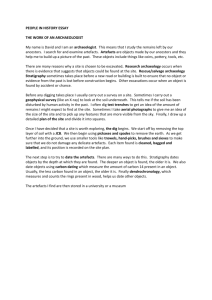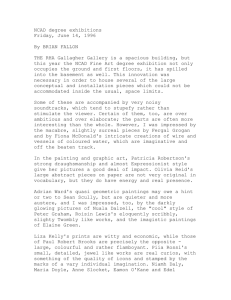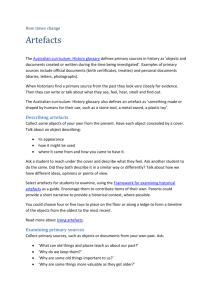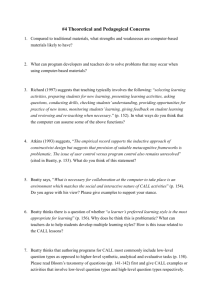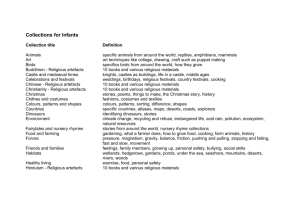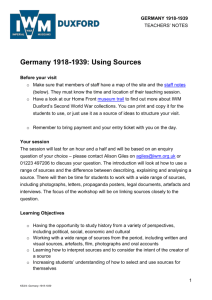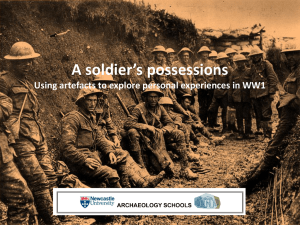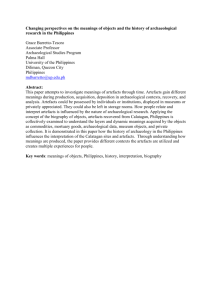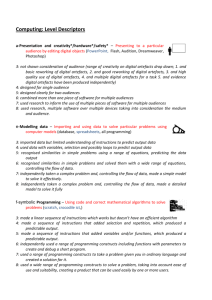here - Chester Beatty Library
advertisement
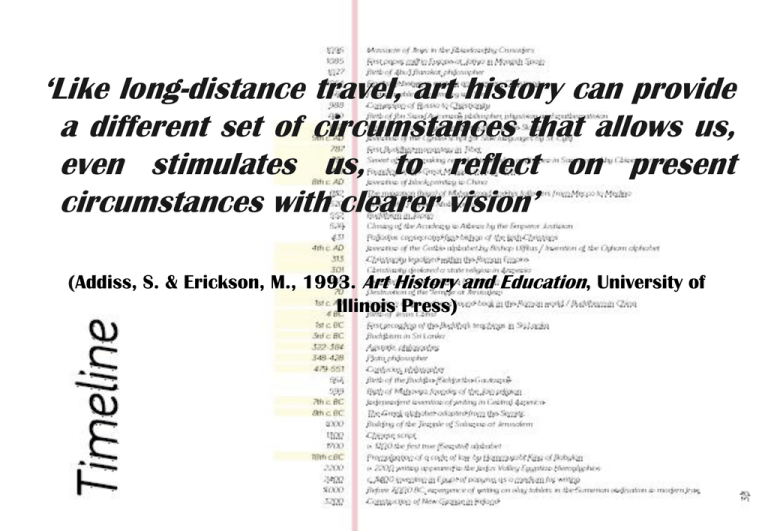
‘Like long-distance travel, art history can provide a different set of circumstances that allows us, even stimulates us, to reflect on present circumstances with clearer vision’ (Addiss, S. & Erickson, M., 1993. Art History and Education, University of Illinois Press) The Chester Beatty Collection as a Teaching and Learning Resource Aoife K eogh Background and Process • Positive Collaborative Process. • Variety of educational contexts. • Current and proposed new art history curriculum and exam. • Arts institution experience. • Masters in visual art education (NCAD) research. • Analysis of available curriculum material. • Previous resources designed. Artefacts Rationale • To highlight the value of the Chester Beatty Library as a teaching and learning site for Leaving Certificate art history and appreciation. • To explore the Chester Beatty collection as a valuable source of first-hand experience and research. • To create a student centred ‘workbook’ that promotes critical and reflective observation. • To provide a relevant and inclusive curriculum resource facilitating intercultural understanding. ‘Students fundamentally meet all learning initiatives, consciously or unconsciously, with such questions as: What does this mean to me? or What can I use this for?’ (Illeris, K., 2008. Contemporary Theories of Learning. Routledge) Key Skills and Learning Outcomes ‘Develop the intelligence and the creativity of students in the significant and distinctive ways afforded by the arts’ (Arts Education Points of Alignment Report 2008) • • • • • • • • Vocabulary and Terminology Technical Knowledge Critical Visual Observation Contextual Understanding Appreciation Research Skills Personal Reflection Synthesis and Application National Council for Curriculum and Assessment (NCCA), The Department of Education and Skills (DES), State examinations Commission (SEC). Experiential Learning (Dewey 1938, Kolb & Fry 1975) ‘Occurs when carefully chosen experiences are supported by reflection, critical analysis and synthesis.’ (Association for Experiential Education, 2011) Question Do you consider Facebook to be a book? Why/Why not? Analyse Application Consider how the Find Giotto di Bondone collection can in your art history book. influence your Compare his use of composition, own colour, scale, tone, media artwork. and subject matter to the work of Jacopo Avanzi in the Reflect Curate Collection. Do you or your family or As a class choose a friends collect objects of selection 10 interesting any kind? Do you think all artefacts from the Research humans have the urge to collection. Plan and design Count how often collect useful, valuable, an exhibition of these in a day you refer to beautiful or unusual artworks in your or rely on writing objects and school. or text. artefacts? Content Information relevant to the Leaving Certificate art curriculum and examination. Imagery Audience Patronage Period Subject Matter Origins Influences Technical Information Materials Art Elements Line Shape Tone Form Pattern Texture Tools Techniques Skills Process Scale Composition Colour Style Decoration Theme Function Media Format Overview • • Section I Journey through the Chester Beatty Library with Artefacts The Life story of a book Kikugawa Eizan 1806 Japan Section II 1. 2. 3. 4. 5. 6. Early Religious Iconography Medieval Manuscripts The Book through the Italian Renaissance Northern European Realism Japanese Art and 20th Century Influence East Asian Invention • • Section III Student tasks and Reflection The Development of Books Claude Monet 1876 France Artefacts Design Keogh, A. & King, F., 2011. In Colour, Fingal County Council Keogh, A., 2011. Content and Incentive, NCAD Conclusion • Completion • Dissemination and Access • Continuing Professional Development (CPD) • Workshops, Talks and Tours ‘Visual interpretation depends on the pleasure, thrills, fascination, wonder, fear or revulsion of the person looking at the images and then writing about them. Successful interpretation depends on passionate engagement with what you see.’ (Rose, D.G., 2006. Visual Methodologies: An Introduction to the Interpretation of Visual Materials: Sage Publications) Contact keogha@ncad.ie or jennys@cbl.ie
